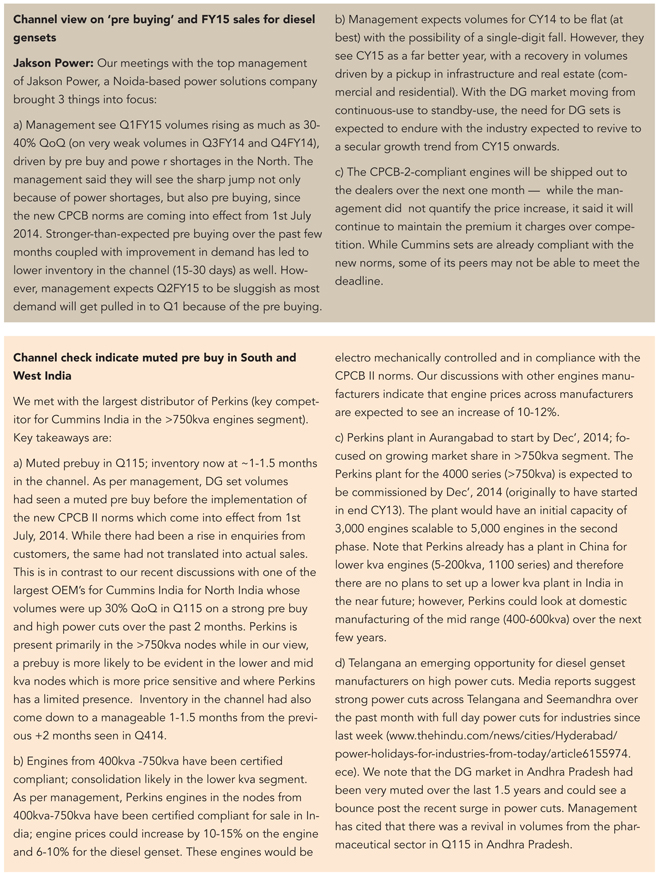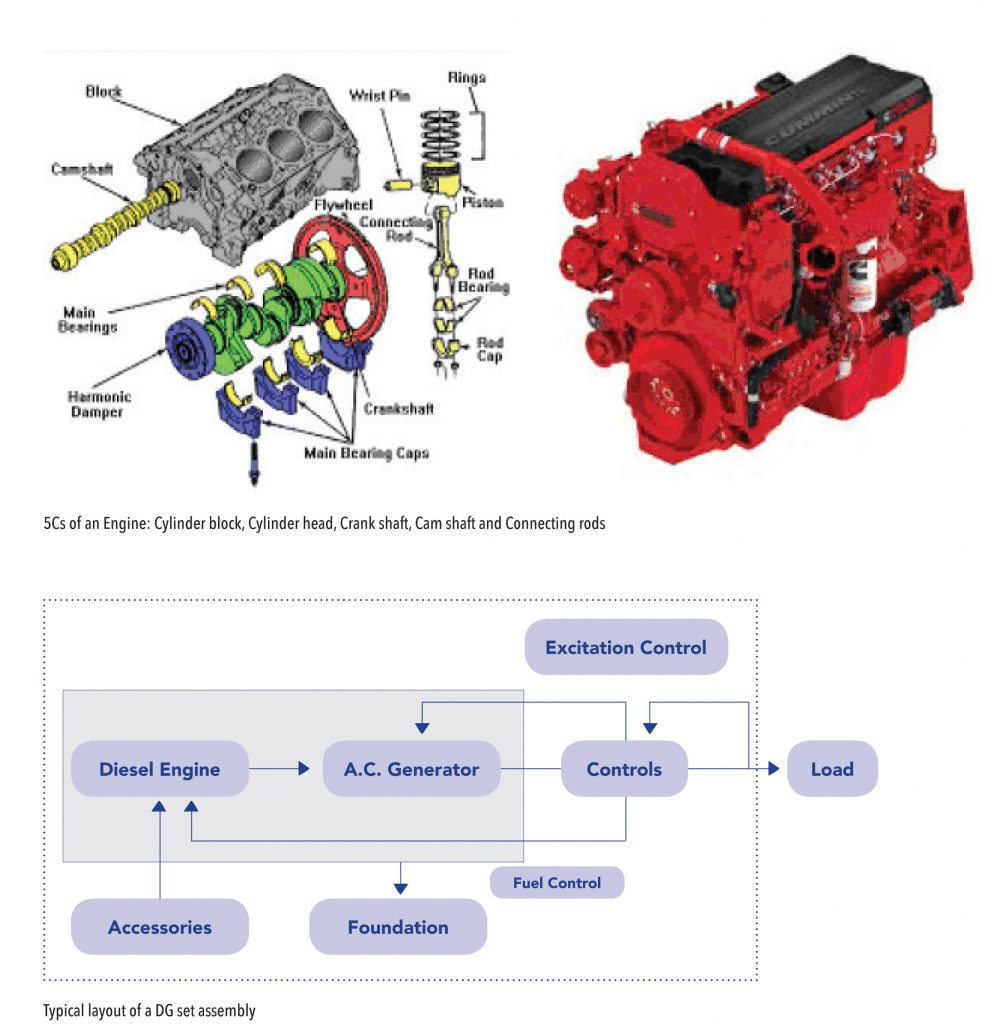The Ministry of Environment and Forests has notified that the CPCB-2 norms will be implemented from 1st July 2014 (CPCB stands for Central Pollution Control Board). These norms have tightened the existing emission requirements on NOX and HC (see table).
We are given to understand from our channel checks that starting from 1st July 2014, engine manufactures and OEMs will stop shipping and selling non-compliant engines and DG sets. While larger players such as Cummins India, KOEL, Caterpillar/Perkins, MTU, Ashok Leyland, would be compliant with the new norms, smaller unorganized players are going to have trouble in achieving compliance — this should benefit larger players, more so in the low-kva segments where the unorganized sector has a larger presence. In our view, Cummins India, which has now started focusing on the low-kva range (up to 75kva) could be a key beneficiary as its market share in this segment is around 10%.
Key changes that need to be made to the existing mechanical engines would be in terms of turbochargers, air and fuel filters, and piston bore — this would increase the cost and price of the engine by 10-15%. Most engine companies would not want to convert the existing mechanical engines to electronic (direct fuel injection) right away, since it would entail a higher increase in cost/price, which the market may not be willing to bear just yet.



Subscribe to enjoy uninterrupted access